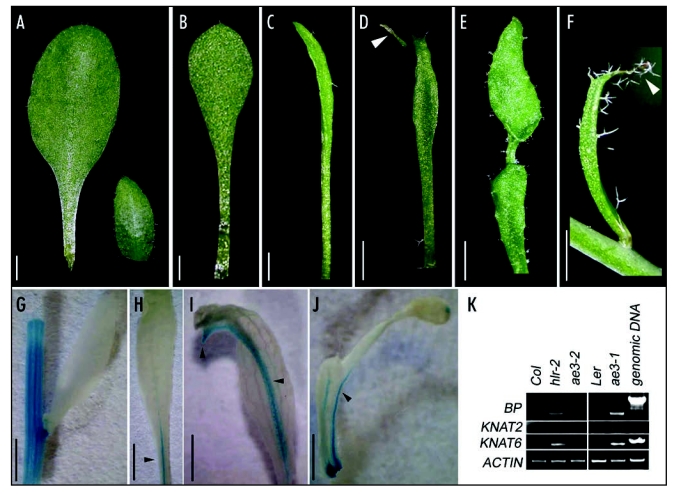Figure 1.

Altered leaf phenotypes and ectopic expression of class-1 KNOX genes in ae3-1 and hlr-2 plants. (A) A rosette leaf (left) and a cauline leaf (right) from a wild-type Landsberg erecta plant. (B–E) ae3-1 leaves. Most rosette leaves of ae3-1 became long and narrow (B), and some of them were very narrow (C). Ectopic outgrowths were formed on abaxial side of some rosette and cauline leaves, associating with the midrib in the distal region of blades. Arrowhead points to an outgrowth appearing on a rosette leaf (D). Some of the outgrowths extend their growth to form leaflet on cauline leaves (E). (F) An hlr-2 cauline leaf with an ectopic outgrowth (arrowhead). (G–J) Analyses of GUS activity in leaves carrying a BP::GUS fusion in wild type (G) and ae3-1 mutant plants (H–J). Note that leaves with outgrowths usually showed stronger GUS staining. (K) RT-PCR analyses of BP, KNAT2 and KNAT6 expression in ae3-1, ae3-2 and hlr-2 leaves. Note that ae3-1 (Ler) and hlr-2 (Col) leaves used in the RT-PCR experiment had ectopic outgrowths, whereas the ae3-2 (Col) had not such structures. Bars = 2 mm in (A–F), and 5 mm in (G–J).
